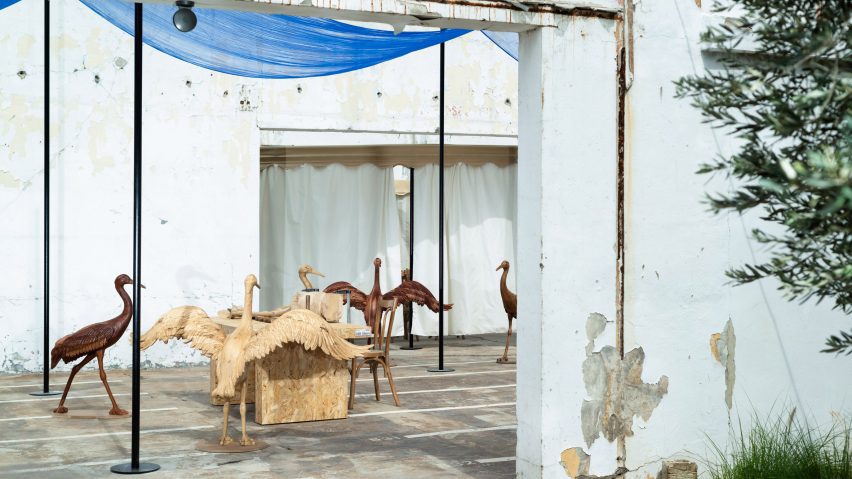
Eight highlights from the first-ever We Design Beirut event
The We Design Beirut festival showcased the Lebanese capital's often-overlooked design scene. Here, Dezeen rounds up eight highlights from its inaugural edition.
We Design Beirut is the city's first design week in five years and the first design event since the explosion that destroyed a large part of Beirut in August 2020. In its aftermath, many creatives left the city and moved to other parts of the region.
Held from 23 to 26 May, We Design Beirut presented products, furniture, concepts, and thematic exhibits by designers that either stayed after the explosion or returned over time.
"We Design Beirut is a platform dedicated to the rebirth of Lebanon's design identity in the world," said founder Mariana Wehbe.
"The 'We' signifies the synergistic effort and dedication of the many parts of the design landscape, a diverse ecosystem of artisans, creators, collectors, and creatives in Lebanon and the diaspora."
For the first edition of the festival, Webhe and co-organizer Sameer Alameen selected three distinct locations to host multiple exhibitions.
They included the ruins of lighting manufacturer PSLab's former headquarters, Ottoman mansion turned archeological museum Villa Audi, and Usines Abroyan, a converted industrial site.
Other presentations and open studios were also part of the four-day programme. Read on for eight exhibition and project highlights:
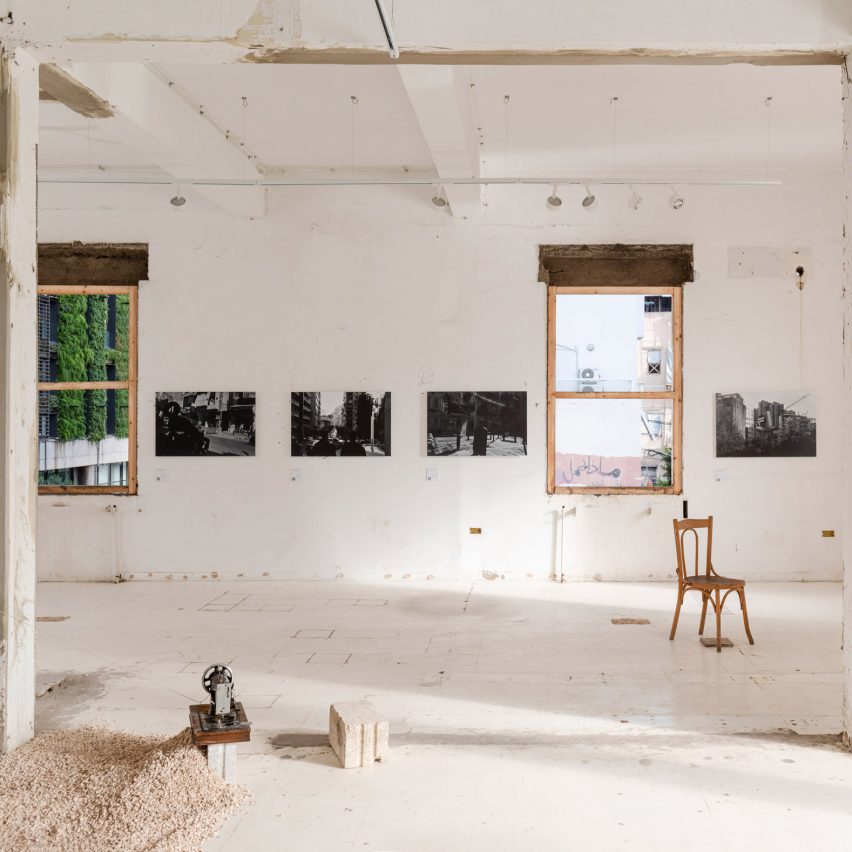
Vision From Beirut by Karim Nader and Julien Lanoo
Local architect Karim Nader commissioned Belgian photographer Julien Lanoo to capture Beirut streetscapes with analogue black and white film.
"Perhaps no city is more contradictory than Beirut," Nader said. "2024, post-explosion, post-revolution, post-financial crisis, Beirut is struggling to reinvent itself. In this interstitial moment, it is time to make a visceral diagnosis of the current situation before the cards are shuffled once again."
The hand-printed images were meant to depict the city from multiple vantage points and intended to suggest the potential of a hopeful future.
"Fragments overlap; architecture, archaeology, fauna, flora and an uncanny human presence appear under a new light," Nader said.
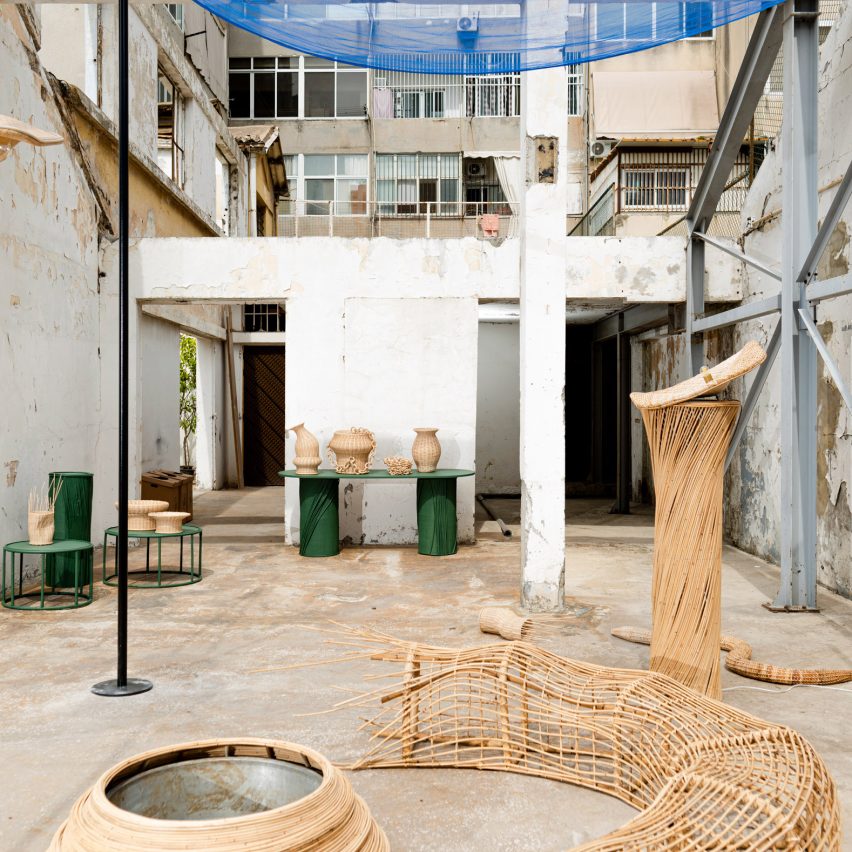
Metiers D'Art
Presented as part of the overall We Power showcase at PSLab, Metiers D'Art was an interactive exhibit with local artisans such as Elie Ayrouth, Fatima Al-Tartousi, and Dima Stephan of design studio Rattan Hun creating new wares in wood, copper, and rattan respectively while on site.
Stephan's work translates the traditional craft technique of woven rattan into lighting fixtures and furnishings, while Al-Tartousi is the first woman in her family to uphold the craft practice of engraved copper vessels.
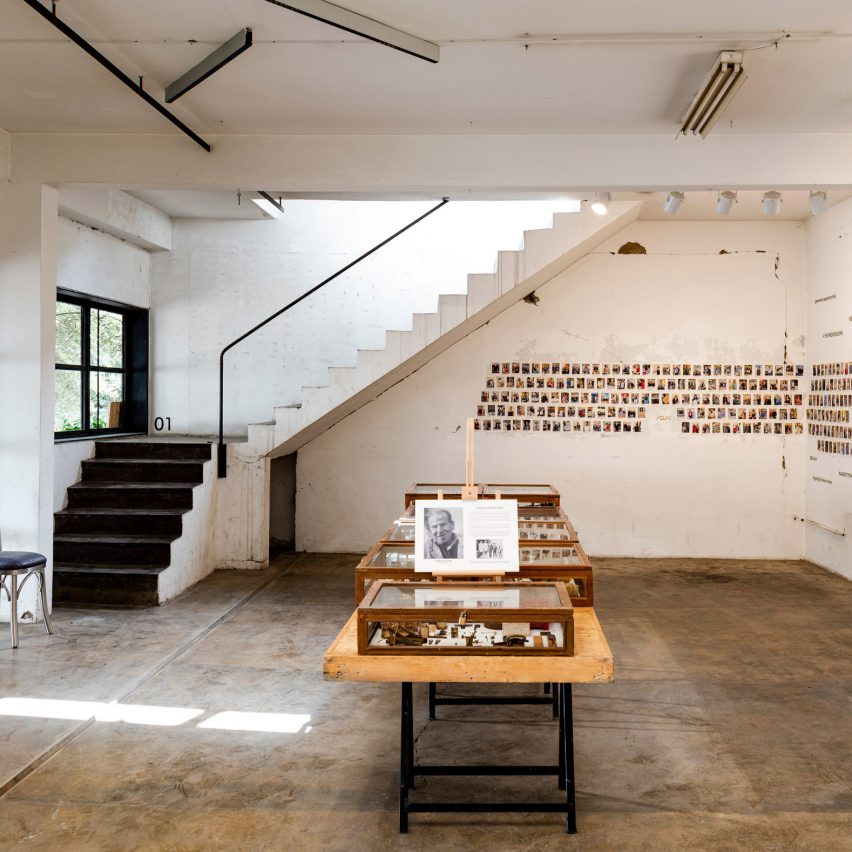
The Ready Hand
The Ready Hand, a platform for Lebanese artisans, showcased 600 portraits of artisans currently operating throughout the country.
Miniature hand tools created by the late car-mechanic-turned-artist Tanious Zghaib were also displayed.
During a panel discussion moderated by art critic and curator Nadine Khalil, Beirut-based designers Nada Debs, Karen Chekerdjian, Georges Mohasseb, Michèle Maria Chaya and Karim Chaya spoke about how contemporary Lebanese design relies heavily on these craftspeople.
"Design cannot be scalable in Lebanon, that's the limitation, and so collaborating with artisans is a necessity," Mohasseb said during the panel.
"Working in high-end, limited edition design is how Lebanese talents are able to look to the future and put the country on the map."
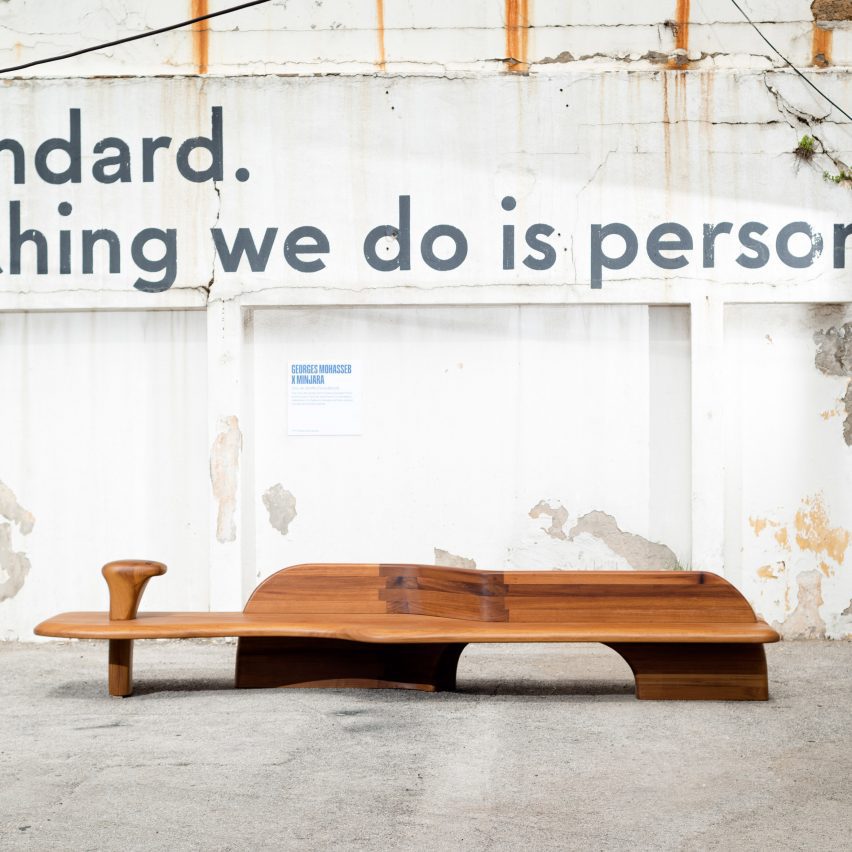
Clou de Girofle Bench by Georges Mohasseb
Through his bespoke furniture practice Studio Manda, Georges Mohasseb debuted his Clou de Girofle Bench as a standalone installation at PSLab placed near a large painted text reading "No Standard, Everything We Do Is Personalised."
Inspired by the shape of a dried clove, the furnishing was produced at the Minjara wood workshop in Tripoli, Lebanon.
The workshop operates out of the Guesthouse at the Rachid Karami International Fairground, originally designed by architect Oscar Niemeyer in 1962 and restored by East Architecture Studio in 2018.
The European Union Private Sector Development (PSD) program-supported initiative trains locals in craft traditions with the aim of providing them with new skills and a new source of income.
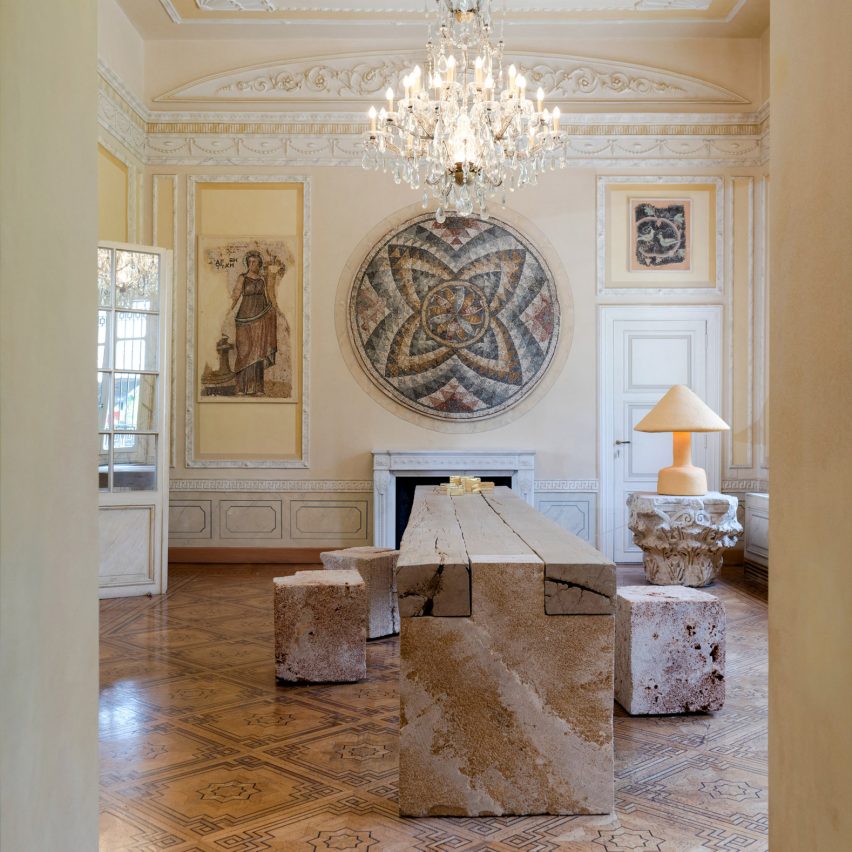
Sands of Welcome by Samer Bou Rjeily
Curated by creative agency Babylon founders Joy Mardini and William Wehbe, the Past Echoes: A Journey through Middle Eastern Product Design exhibited designs by 33 creatives in different rooms of Villa Audi.
"From furniture pieces to utilitarian objects, the works converge within its walls, echoing the region's rich cultural heritage and craftsmanship," said Babylon.
"Past Echoes stands as a testament to the transformative power of design, preserving memories and anchoring historical significance within the architectural gem of Villa Audi."
Beirut-based designer Samer Bou Rjeily's Sand of Welcome table was created using recuperated Burmese teak coated in sand from Lebanon's southern coast.
"Complementing the organic elegance, the legs and seaters are sculpted from premium local sandstone, celebrating Lebanon's Phoenician roots and offering durability and timeless appeal," said Bou Rjeily.
"This exhibition piece serves as a tribute to the Lebanese art of living and the cherished tradition of hospitality, symbolising the art of receiving where people gather around a table."
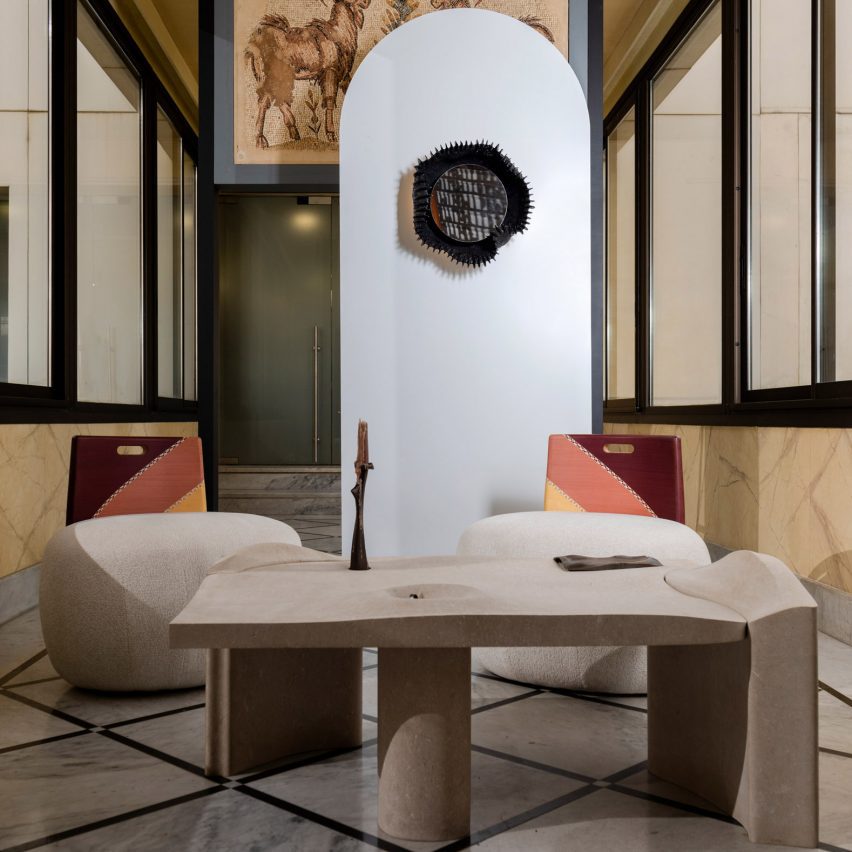
Carrier Table by Shaha Raphael
Also on view as part of the Past Echos exhibition, Shaha Raphael's Carrier Table is made out of sinuously carved limestone components that interlock.
The design incorporates slots for various interchangeable elements, such as a nickel candle holder, an aluminium catch-all and a silver ashtray.
"Shaped by tactile interaction, its topology influences our behaviour and invites the user to have a closer look and feel through the folds, gaps and protrusions that provoke ritual," Raphael said.
"The piece bears an accumulation of traces: the fossils in the stone, speaking to our geological past as a marine environment, the hand-drawn and sculpted marks, and the deliberately visible mechanical traces of the machines."
The various vignettes of the Past Echo exhibition were presented on carpets from Beirut brand Iwan Maktabi.
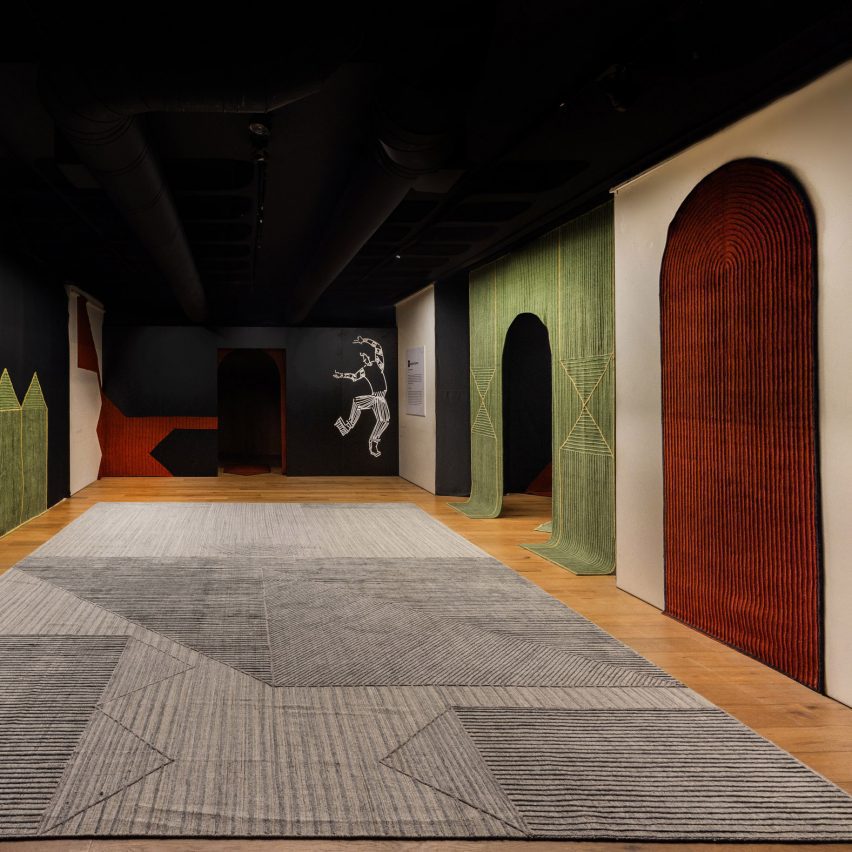
Forgotten Space by Thomas Modeen for Iwan Maktabi
Beirut rug manufacturer Iwan Maktabi often collaborates with artists and designers on bespoke projects.
On view at its main showroom, designer Thomas Modeen's Forgotten Spaces installation comprised geometric carpets used as walls and room dividers.
"The installation highlights the aesthetic potential hidden in overlooked areas of interior spaces, paying homage to corners and transitional spaces," said Iwan Maktabi.
"Modeen's creativity extends beyond floor coverings, using original genotypes to create tapestries for adorning various spaces, even meditation spaces."
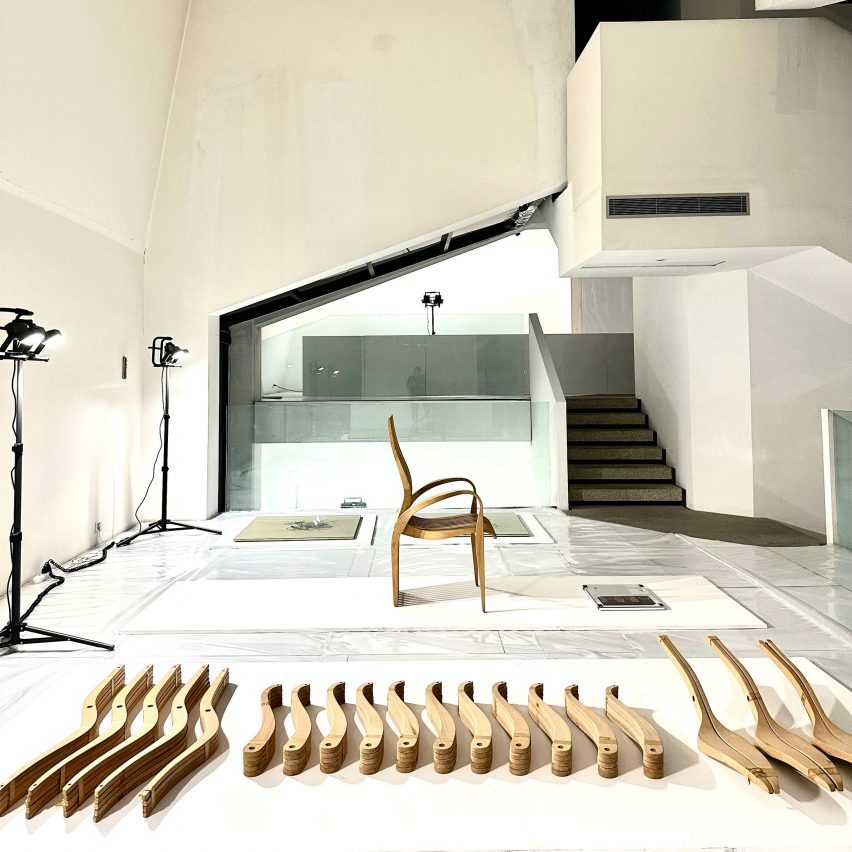
All things must('nt) pass by Bernard and Teymour Khoury
Lebanese architect Bernard Khoury and his son Teymour curated the All things must('nt) exhibition in the brutalistic Interdesign building constructed in the 1970s by his father, architect Khalil Khoury.
The building was programmed specifically to serve as a showroom for his furniture company Interdesign, but never opened due to the start of the Lebanese civil war in 1975.
Khalil Khoury was able to complete the project in 1996, but by that time he was bankrupt and the building was seized.
For We Design Beirut, Bernard and Teymour Khoury were able to open the building for the first time in 50 years and mount a four-day exhibition showcasing Khalil's archive.
This included drawings, watercolours, maquettes, furniture prototypes, photographs, correspondence and a recorded interview with architectural historian George Arbid.
"The installation recounts the fabulous story of a hopeless modern project," Bernard Khoury said.
"From its short-lived triumphs to its sad closure, the story of Khalil Khoury and the Interdesign building epitomises in utmost ways the great aspirations of an extraordinary and forward-looking project which started during the glorious post-independence years and ended with the political debacle of the young republic of Lebanon."
The photography is by Walid Rashid and Karim Sakr.
We Design Beirut took place at venues across the city from 23 to 26 May. The event was originally scheduled for late October 2023 but was postponed twice due to the ongoing Israel-Gaza war. For more events, exhibitions and talks in architecture and design visit Dezeen Events Guide.